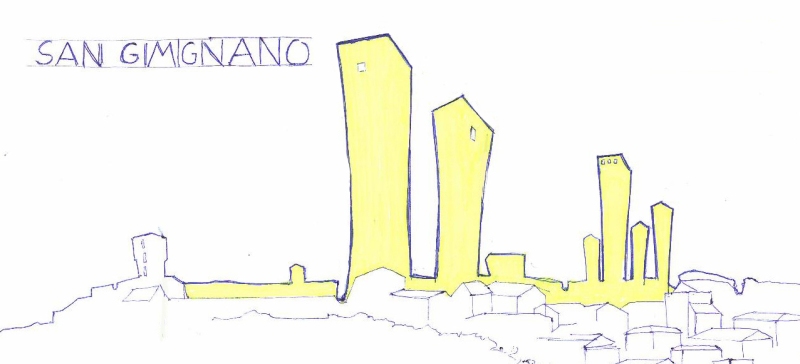It’s famous for its innumerable stone towers, rose in the period of High Medieval Ages, which well-preserved condition enables us nowadays to imagine how it looked like in its days of glory.
The History
The oldest known document mentioning the city comes from 30 August 929, however we know that the land was inhabited before by Etruscan and further also by Roman culture. In 1199 town declared independence and became Free Commune. It flourished thanks to its agriculture concentrated on commercing wool, and producing refined wine like Vernaccia or saffron.

The end of San Gimignano’s prosperous period was marked by the plague’s arrival in 1348, which completely decimated the town. Two thirds of 13.000 people fell victim of the disease at that time and afterwards San Gimignano has never returned to its previous glory. Depopulation and economic decline led to the loss of political autonomy and the town submitted to Florence.
Medieval Skyscrapers
In effect the town seems to be now like frozen in time. No further styles or fashions affected the town’s outlook in future, thus we can enjoy its preserved medieval atmosphere now.
“Manhattan of Medieval” is how San Gimignano is called nowadays, referring to its enormous congestion of towers. These were the well-off families that were responsible for erecting this original outlook of the town. The reason was that a tower equalled power.
The reason why we don’t come across this thinking in other historic cities like Florence, Lucca or Siena remains unclear. We can assume however that it might have something to do with the need of defending spots where they could easily observe what is happening in the town and around it.
Probably, also the fact that the view over the tuscan valleys and hills must have been something worthwhile.
Towers’ specifications
From 72 towers built in San Gimignano only 13 remained to our times. Many of them were cut off or has fallen down. Before the shape of the towers changed influenced by the reference model of tower in Pisa, the typical form of the towers was a high massive prism with a few, tiny openings, which enabled flow of air inside and provided thermal comfort for residents.
Typical thickness of the walls was 2 meters and rooms’ area was 1×2 meters squared. The kitchen was located in the highest levels, so as to secure against fire, which was a common problem at that time.
For learning more I recommend looking at the gameplay from the city in Assassin’s Creed II, in which Ubisoft reconstructed the town quite similarly how it looked in its most splendid state.
References: http://www.sangimignano.com/en/art-and-culture/town-history.asp [access 27/10/2013]

